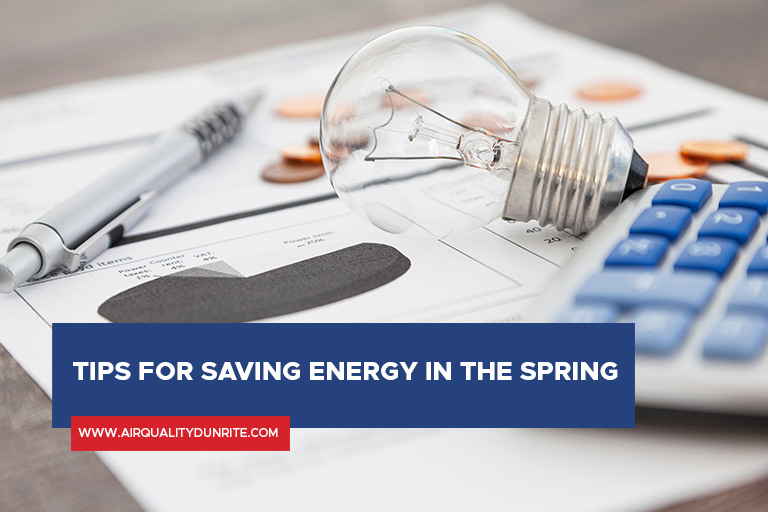As spring unfolds, bringing longer days and milder temperatures, many homeowners look for ways to reduce energy consumption and save on utility bills. This season offers a unique opportunity to implement energy-saving strategies that not only cut costs but also enhance your home’s comfort and efficiency. From optimizing your heating system to embracing natural light, the following tips will help you make the most of the spring season.
Optimize Your Heating System

-
Schedule Regular Maintenance
Ensuring your furnace is in top condition is crucial for energy efficiency. A well-maintained system operates more efficiently, saving you money on energy bills. It’s advisable to hire professionals for furnace repair to check your system, perform necessary adjustments, and replace any worn-out parts.
-
Upgrade Your Thermostat
Installing a programmable thermostat can lead to significant energy savings. By adjusting the temperature based on your schedule, you can ensure your home is comfortably heated without wasting energy when you’re asleep or away.
Embrace Natural Light and Warmth
-
Utilize Sunlight
Open curtains and blinds during the day to allow sunlight to naturally warm your home, reducing the need for heating. This not only saves energy but also improves your mood and vitamin D intake.
-
Seal Windows and Doors
Prevent warm air from escaping by sealing any gaps or leaks around windows and doors. Weatherstripping or caulking can be an effective and inexpensive way to enhance your home’s insulation.
Invest in Energy-Efficient Appliances
-
Energy Star Appliances
When it’s time to replace or upgrade your home appliances, opt for those with the Energy Star label. These products meet strict energy efficiency guidelines set by the U.S. Environmental Protection Agency and can significantly reduce your home’s energy consumption.
-
Smart Home Gadgets
Consider investing in smart home gadgets like energy monitors and smart plugs. These devices provide real-time feedback on your energy usage, helping you identify and eliminate wasteful practices.
Landscape for Energy Savings
-
Plant Trees Strategically
Planting deciduous trees on the south and west sides of your property can provide shade during the hottest parts of the day, reducing the need for air conditioning. In the winter, when the trees lose their leaves, they’ll allow sunlight through, offering natural warmth.
-
Opt for Native Plants
Native plants require less water and maintenance than non-native species, making them an eco-friendly landscaping choice. They also provide natural cooling through transpiration, further reducing the need for artificial cooling.
Enhance Ventilation and Airflow
-
Use Ceiling Fans
Reverse the direction of your ceiling fans to push warm air downwards, improving the circulation of heated air throughout your home. This simple action can make your living spaces feel warmer without increasing the thermostat setting.
-
Improve Ventilation
Ensure that your home’s ventilation system is clean and unobstructed. Regularly cleaning or replacing air filters can improve air quality and the efficiency of your heating system, reducing the need for frequent temperature adjustments.
Adjust Your Water Heating
-
Lower Water Heater Temperature
Many households have their water heater set higher than necessary. Lowering the water heater temperature to around 120 degrees Fahrenheit can reduce energy consumption while still providing you with comfortably warm water.
-
Insulate Water Pipes
Insulating hot water pipes prevents heat loss as water travels from your heater to faucets, allowing you to lower the water temperature setting and save energy. This also means you get hot water faster, reducing water wastage.
Smart Use of Appliances and Electronics

-
Full Loads for Dishwashers and Laundry
Run your dishwasher and washing machine only with full loads. This practice maximizes the efficiency of each cycle, reducing the number of cycles needed over time and saving both water and energy.
-
Unplug Phantom Loads
Many electronics consume power even when turned off, known as phantom loads. Unplug devices when not in use or invest in smart power strips that cut power to devices in standby mode, reducing unnecessary power consumption.
Update Home Insulation
-
Enhance Attic Insulation
Adding insulation to your attic can prevent warm air from escaping through the roof, keeping your home warmer in the cooler evenings of spring. This can significantly reduce the need for heating and lower energy bills.
-
Install Energy-Efficient Windows
If your budget allows, consider replacing old, drafty windows with energy-efficient models. These windows are designed to keep warm air inside during the spring, reducing the workload on your heating system and leading to energy savings.
Incorporate Heat Pump Technology
-
Invest in a Heat Pump
Heat pumps are an energy-efficient alternative to furnaces and air conditioners for climates with moderate heating and cooling needs. By moving heat rather than generating it, heat pumps can provide equivalent space conditioning at as little as one-quarter of the cost of operating conventional heating or cooling appliances.
-
Regular Heat Pump Maintenance
Just like traditional heating systems, heat pumps require regular maintenance to operate efficiently. Seasonal checks and cleanings ensure that your system runs smoothly, extending its lifespan and maintaining its energy efficiency.
Implementing these energy-saving tips can lead to significant reductions in your energy consumption and utility bills this spring. Regular maintenance of your heating system, embracing natural light, investing in energy-efficient appliances, and thoughtful landscaping are all effective strategies to enhance your home’s energy efficiency.
For professional assistance with your heating system, including furnace repair in Vaughan, Toronto, Etobicoke, and Richmond Hill, contact Air Quality Dunrite at (416) 674-8184. We provide reliable service and support.



